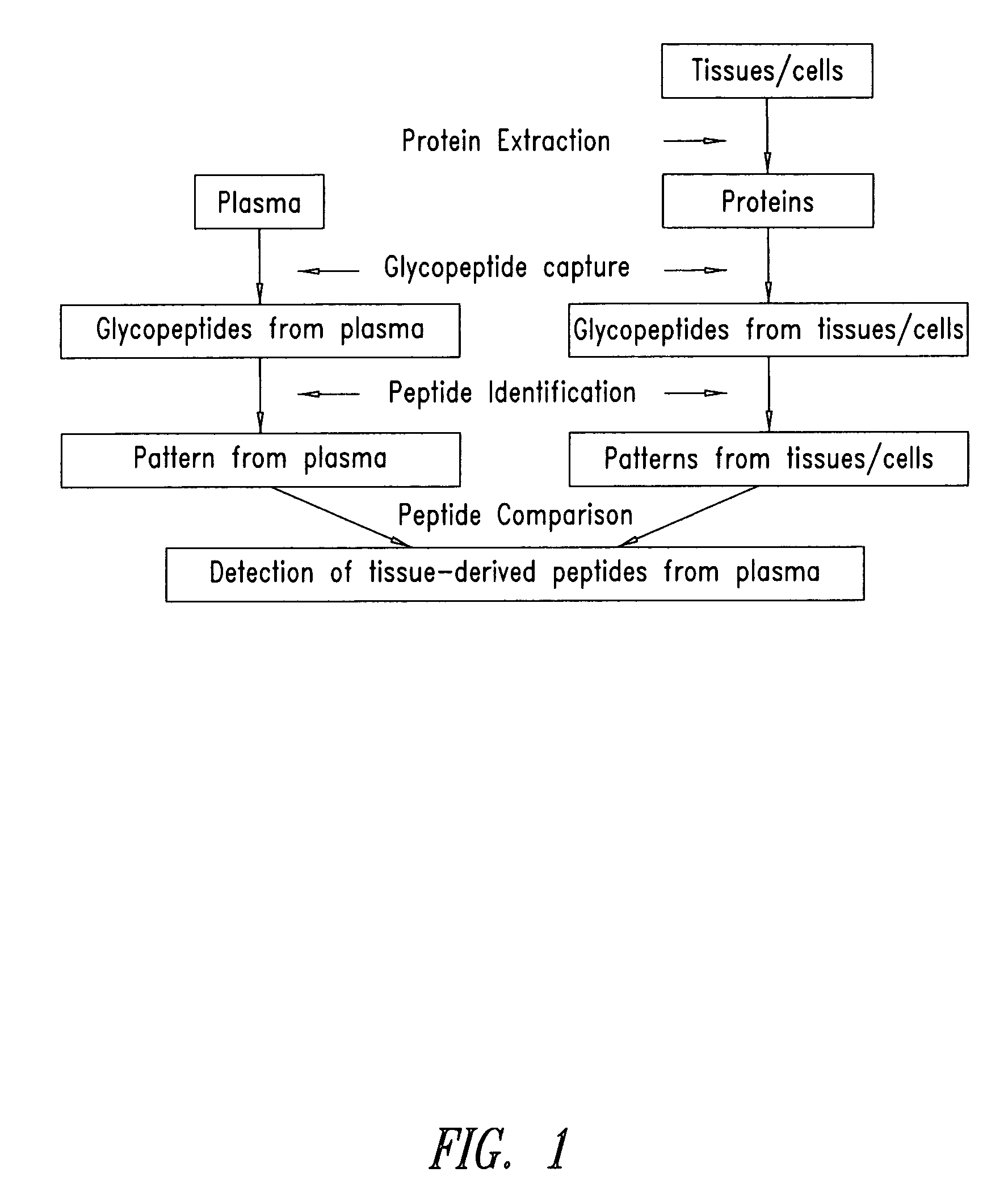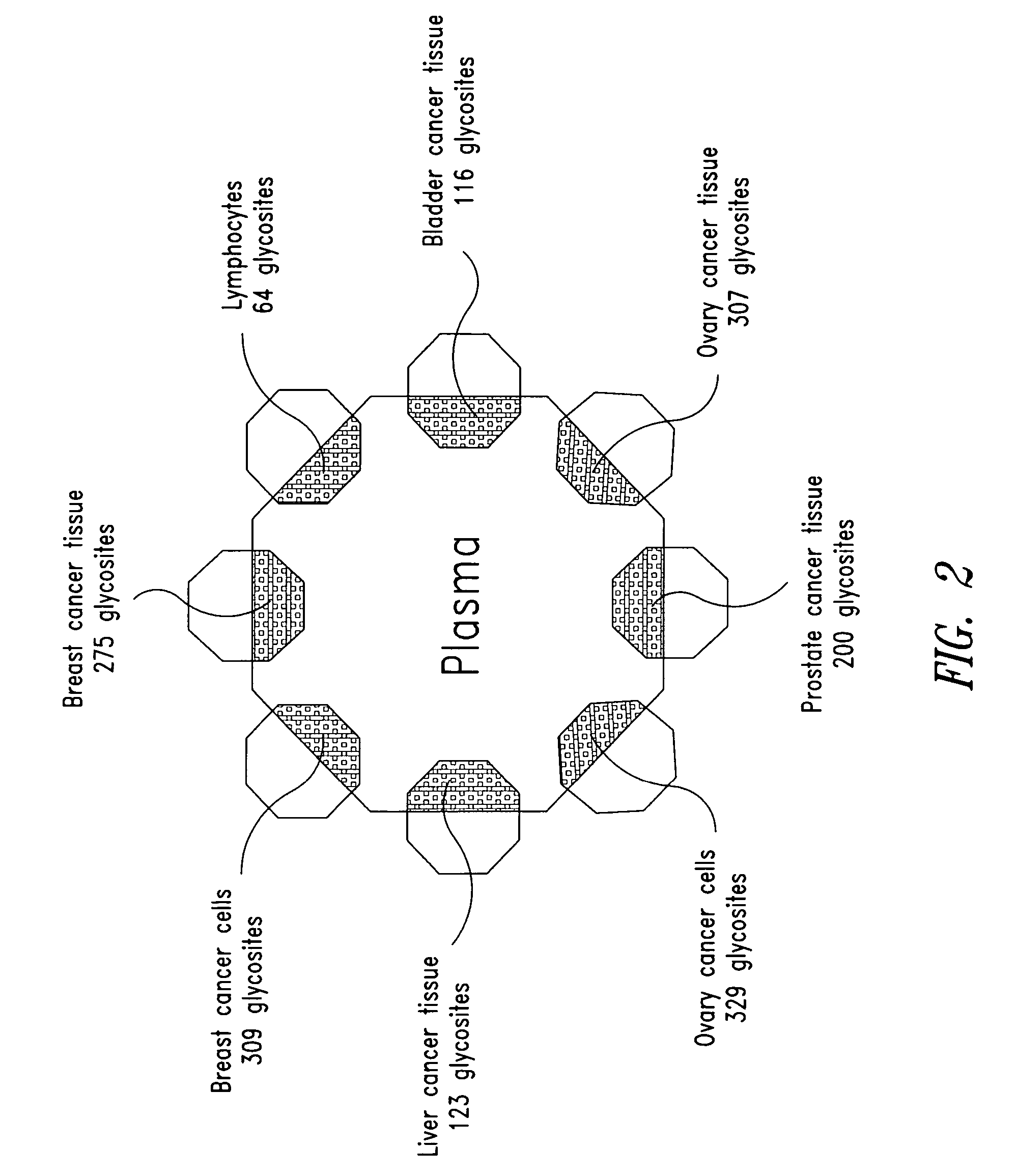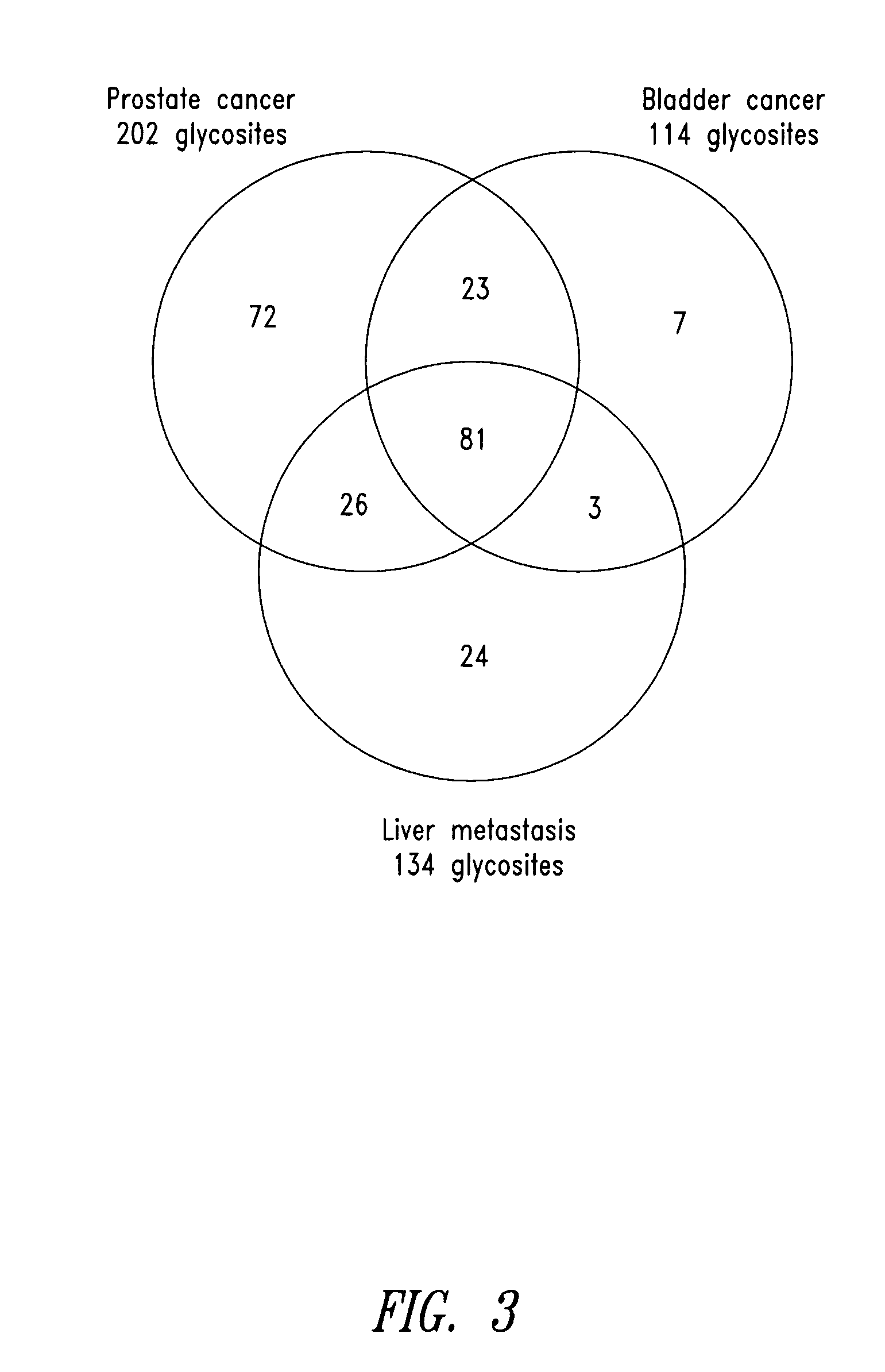Tissue-and serum-derived glycoproteins and methods of their use
a glycoprotein and tissue-derived technology, applied in the field of tissue-derived serum-derived glycoproteins and glycosites, can solve the problems of limited expression array studies, hampered discovery of tissue-specific changes in blood, and inaccessible most tissues for routine screening
- Summary
- Abstract
- Description
- Claims
- Application Information
AI Technical Summary
Benefits of technology
Problems solved by technology
Method used
Image
Examples
example 1
[0383] This Example demonstrates that tissue-derived proteins are both present and detectable in plasma via direct mass spectrometric analysis of captured glycopeptides, and thus provides a conceptual basis for plasma protein biomarker discovery and analysis. Further, this Example provides tissue-derived proteins detectable in plasma that have utility in a variety of diagnostic settings.
Materials and Reagents
[0384] For chromatography procedures, HPLC-grade reagents from Fisher Scientific (Pittsburgh, Pa.) were used. PNGase F was purchased from New England Biolabs (Beverly, Mass.) and hydrazide resin from Bio-Rad (Hercules, Calif.). All other chemicals used in this study were purchased from Sigma (St. Louis, Mo.). The SK-BR-3, Ramos, and Jurkat cells were obtained from ATCC (American Type Culture Collection, Manassas, Va.). Human tissue specimens were obtained from organs surgically removed because of cancer under a human subject approval for prostate and bladder cancer biomarker ...
example 2
Database to Display Identified and Predicted N-Linked Glycopeptides
[0420] The large number of N-linked glycopeptides identified in plasma from our study were mapped to all of the theoretical tryptic N-linked glycosylation sequons from the human IPI database (version 2.28). A web interface, UniPep (www dot unipep dot org) was developed to display these theoretical N—X—S / T sequon-containing peptides in the human IPI database along with their corresponding experimentally identified N-linked glycopeptides. This is of particular relevance with respect to those genes or proteins that have been shown to change their abundance in disease tissues compared to normal tissues using either genomic or proteomic approaches. The detection of these proteins in plasma, especially ones that are secreted or expressed on cell surfaces and are therefore most likely to make their way into blood plasma, is a critical step in the development of these proteins as potential disease biomarkers. Gene different...
example 3
Quantitative Analysis of Proteins Secreted into the Extracellular Space of Prostate Cancer Tissues using SPEG and LC-MS / MS
[0422] Proteins present in the extracellular matrix contain proteins secreted from cells that are likely deposited into the blood. To identify proteins in the cell-free extracellular matrix of prostate cancer, samples (0.1 g) from patient-matched prostate cancer and adjacent control prostate tissues were processed by collagenase digestion into single cell suspensions, and the cell-free digestion media, containing secreted proteins in extracellular matrix, was analyzed. The samples were run on an SDS-PAGE gel. Silver staining showed minimal protein degradation, and a PSA Western blot showed a prominent reacting band at the expected molecular weight for PSA. To eliminate the analysis of abundant cytoplasmic proteins released from dead cells, the glycoproteins were isolated from the cell-free digestion media using SPEG. The isotopic labeled glycopeptides isolated f...
PUM
| Property | Measurement | Unit |
|---|---|---|
| blood pressure | aaaaa | aaaaa |
| blood pressure | aaaaa | aaaaa |
| weight | aaaaa | aaaaa |
Abstract
Description
Claims
Application Information
 Login to View More
Login to View More - R&D
- Intellectual Property
- Life Sciences
- Materials
- Tech Scout
- Unparalleled Data Quality
- Higher Quality Content
- 60% Fewer Hallucinations
Browse by: Latest US Patents, China's latest patents, Technical Efficacy Thesaurus, Application Domain, Technology Topic, Popular Technical Reports.
© 2025 PatSnap. All rights reserved.Legal|Privacy policy|Modern Slavery Act Transparency Statement|Sitemap|About US| Contact US: help@patsnap.com



